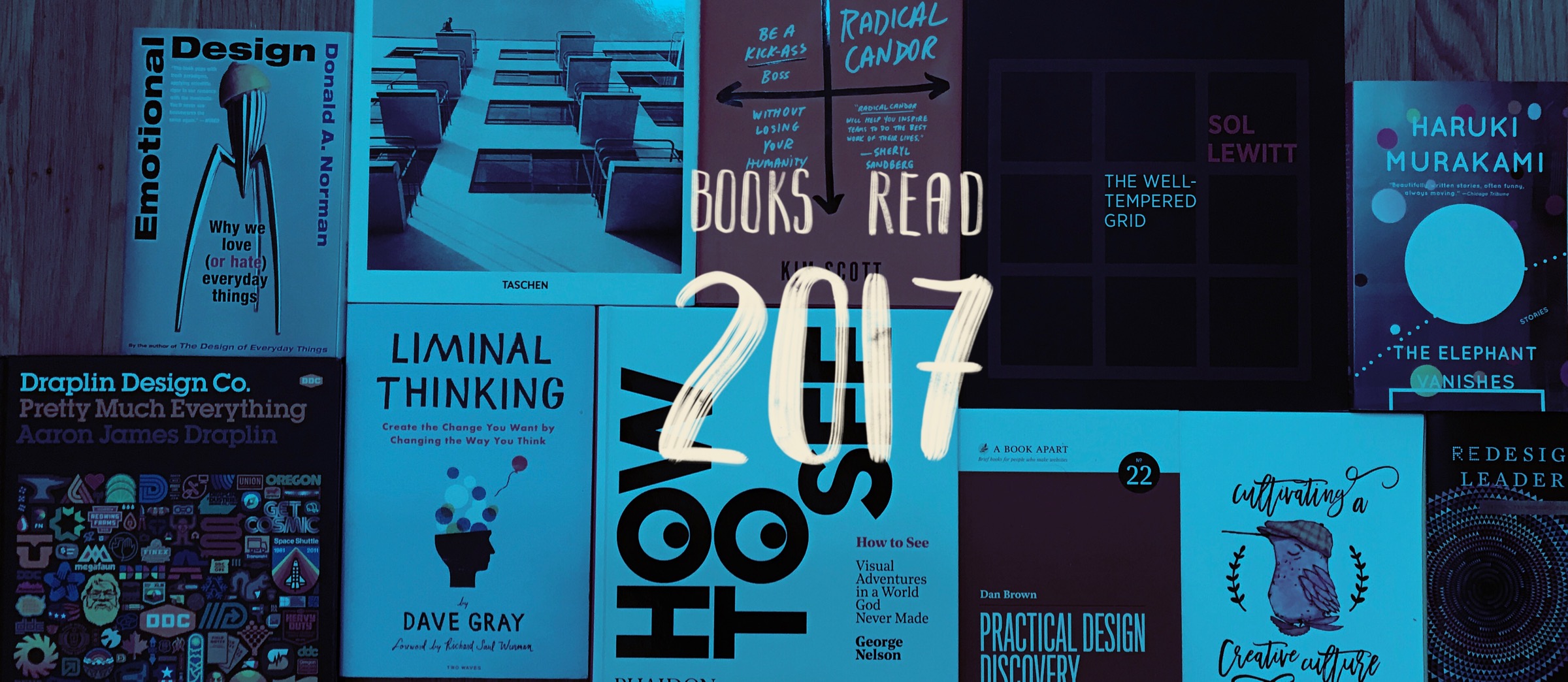Books Read in 2017

This year I read 14 books, which is 8 fewer than the 22 I read last year (view last year’s list here). Lower than I was hoping, but it at least averages out to more than 1 per month. I’m not too surprised, though, since I traveled a lot and was busier socially this year. Once again, I was heavy on the non-fiction — I only read 2 fiction books this year. Just 2! I need to up that number in 2018.
Highlights
Service Design: From Insight to Implementation
by Andy Polaine, Lavrans Løvlie, and Ben Reason
This book really opened my eyes to the world of service design and thinking about a person’s experience beyond just the confines of the screen. Using the product is just one part of a person’s overall experience accomplishing their goal. This book is a great primer on the subject.
Sol LeWitt: The Well-Tempered Grid
by Charles Haxthausen, Christianna Bonin, and Erica Dibenedetto
I’ve been quite taken by Sol LeWitt’s work after seeing his art at various museums, such as the SF MOMA. I finally bought a book to learn more about his work and approach to art. This inspired me to re-create his work programmatically.
The Corrections
by Jonathan Franzen
This is the first Franzen book I’ve read, and I thoroughly enjoyed it. I’ve been interested in him for a long time because David Foster Wallace is a fan of his. A well-written, engaging tale of a family’s troubles, anxieties, and the “corrections” they need to make to keep their lives intact.
Radical Candor
by Kim Scott
Great book on managing people. Highly recommended for anyone who manages or is interested in managing. Even if you’re an individual contributor it’s worth reading because it will help you be a better employee and have a better relationship with your boss.
Emotional Design
by Don Norman
This companion to Norman’s The Design of Everyday Things is just as good as its better-known sibling. In this book he focuses on the emotional and aesthetic side of design, and why those elements are an important part of designing a successful product. He goes beyond fluffy, surface-level explanations, though, and explains the why behind these phenomenon using science, psychology, and biology. This makes for a convincing argument behind the importance of this aspect of design, which can often be written off as “nice-to-have” or self-indulgent.
Full List of Books Read
- Service Design: From Insight to Implementation by Andy Polaine, Lavrans Løvlie, and Ben Reason (1/8/17)
- Sol LeWitt: The Well-tempered Grid by Charles Haxthausen, Christianna Bonin, and Erica Dibenedetto (1/13/17)
- Redesigning Leadership by John Maeda (2/22/17)
- Draplin Design Co.: Pretty Much Everything by Aaron James Draplin (3/14/17)
- The Corrections by Jonathan Franzen (3/15/17)
- Practical Design Discovery by Dan Brown (3/20/17)
- Mapping Experiences by Jim Kalbach (4/18/17)
- How to See: Visual Adventures in a World God Never Made by George Nelson (6/9/17)
- The Elephant Vanishes by Haruki Murakami (7/9/17)
- Cultivating a Creative Culture by Justin Dauer (8/8/17)
- Liminal Thinking by Dave Gray (10/26/17)
- Radical Candor by Kim Scott (11/26/17)
- Emotional Design by Don Norman (12/5/17)
- Bauhaus by Magdalena Droste (12/28/17)
All links are Amazon affiliate links.